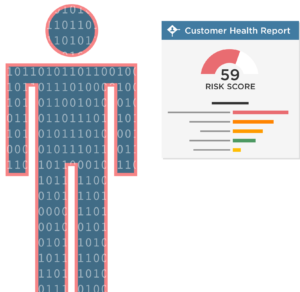Happy customers make a business thrive, unhappy customers can bring down a business. It’s critical to understand your customers’ health.
Healthy customers are happy and satisfied customers who engage with your brand on a regular basis. They will stay with you for longer and recommend your products and services to friends, family and colleagues.
If you are operating in a highly competitive market and you want to keep your current customers while continuously adding new ones, it’s important to create a strategy for monitoring your customers’ health.
Assessing which of your customers are healthy and which ones are showing signs of sickness is important in understanding the factors that contribute to customer retention and achieving consistent growth.
The old way: CSAT, NPS or CES
Most customer feedback programs and methods for understanding customer health are based on surveys. NPS (Net Promoter Score), CES (Customer Effort Score) and CSAT (Customer Satisfaction) are the most common customer metrics used. These metrics are determined by surveys filled in by customers:
- NPS – is the percentage of customers rating their likelihood to recommend a company, a product, or a service to a friend or colleague.
- CSAT – Is calculated by asking a question, such as “How satisfied were you with your experience?” The respondent is asked to rate their response according to a scale.
- CES – defines the amount of effort a customer needs to exert to resolve an issue with a product or service.
NPS and CSAT only provide a picture of what’s happening with people who have completed a survey. But most customers don’t provide feedback. Most customers who are frustrated or unhappy do not complain. They just leave and tell others about their experience. These metrics fail to reveal the driving factors behind customers’ responses to the questions. If people are dissatisfied, they provide no data as to ‘why’.
These metrics are lagging metrics that provide little insight on future behaviour or purchasing decisions. These metrics are easy to measure, which explains their popularity and provide some measure as to the success of your customer strategy. But they are limited in their application and their ability to reveal opportunities for improvement.
Old result: Not another survey
Survey fatigue is a prolific problem, where customers feel overburdened by requests to complete surveys and provide feedback. They spend minimal effort to answer questions accurately or avoid doing the survey altogether.
Results are incomplete and biased because only a fraction of the customer base is being surveyed. The results are also looking backwards, providing no indication of which customers are likely to churn nor insight into how to improve performance.
The new way: AI-enabled health check
Organisations collect vast amounts of transactional and behavioural data about their customers. AI and predictive analytics allows you to leverage this data to provide a deeper and more accurate picture of your customers’ health. Rather than relying on a limited set of survey data from which to extrapolate conclusions across your entire customer base, you can assess a complete set of data that is truly representative of all your customers.
Rather than relying on data provided in surveys, you’re building a more accurate picture of your customers’ health based on their actual transactions and behaviours. The data is also far more accurate as its free from respondent bias and fatigue in completing surveys.
You can tell which customers are satisfied or dissatisfied as revealed by their past behaviour and interactions with the organisation. You can identify the reasons why they are dissatisfied. Finally, you can predict, with a fair degree of accuracy, what their future behaviour will be.
New result: A true understanding of your customers’ health
If you can accurately identify signs of sickness in the health of your customers, before they churn and go to a competitor, you can intervene with a remedy to retain them. You will also be in a better position to design and implement cost-effective retention strategies – only targeting customers that require attention.
Having more accurate and comprehensive data at your fingertips will lead to better decision making and an enhanced ability to identify opportunities for improvement. The success of your customer experience strategy will also be bolstered due to your customer-facing teams being better equipped with deeper and more accurate insights. Ultimately, this means increased customer retention leading to consistent business growth.
Unique useful insight (UUI):
Using transactional and behavioural data you can accurately diagnose the health of your entire base.

Evidence
More reading on the way businesses are measuring customer health.
https://blog.hubspot.com/service/customer-health-score
https://hbr.org/2019/10/where-net-promoter-score-goes-wrong
https://blog.flexmr.net/behavioural-data-vs-declarative-survey-data
We at SmartMeasures are helping businesses accurately measure the health of their entire customer base.
If you would like to know more, get in touch.


